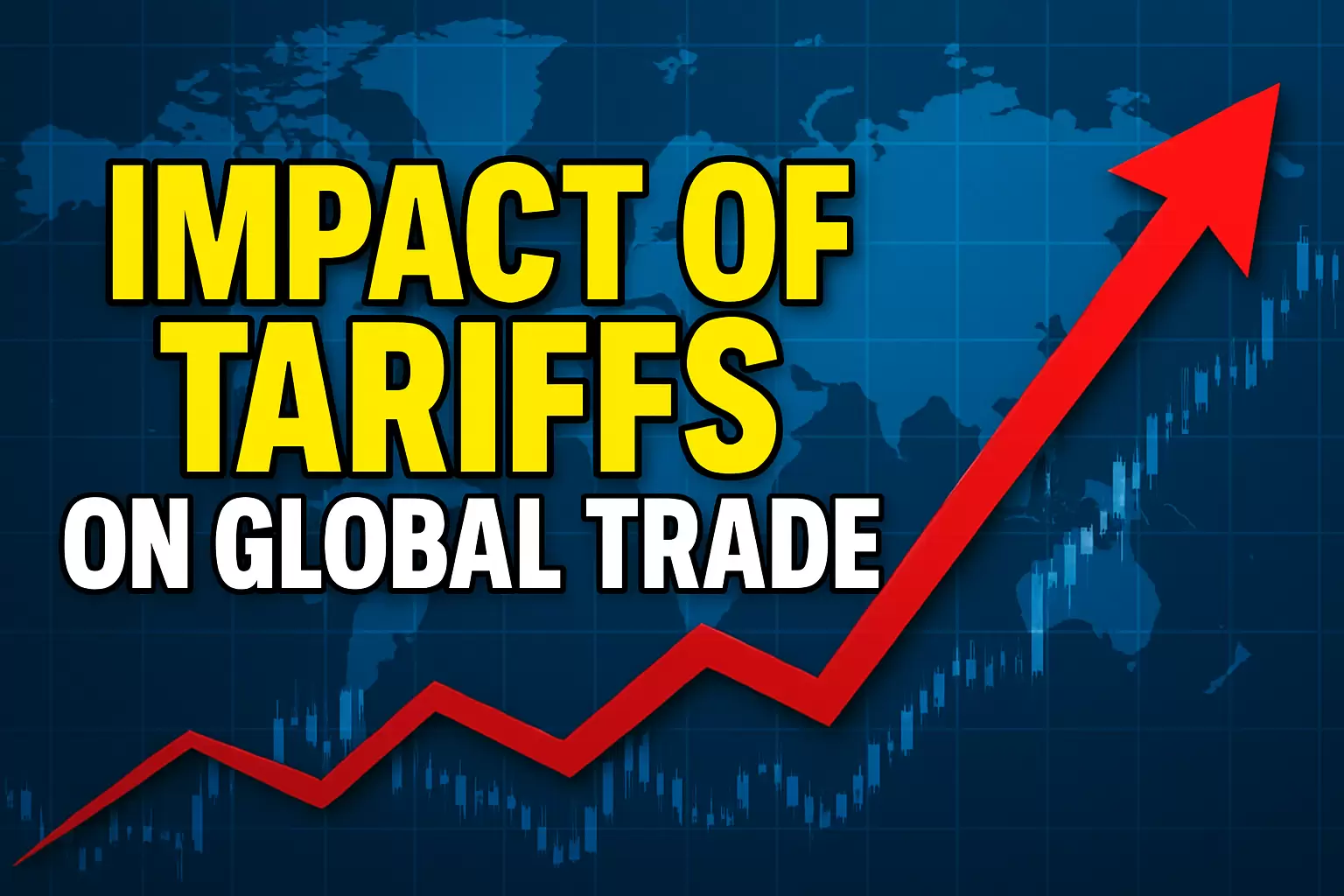— What It Means for Global Trade & Markets
In a surprising move this April, the President of the United States announced a fresh wave of tariffs on imports from countries including China, Mexico, India, and Germany. This announcement has sent ripples across global markets, prompting analysts and investors alike to ask — are we heading toward another trade war?
Let’s explore what these new tariffs mean for the global economy, world trade, and both the short-term and long-term impacts on the U.S. stock market.
🌍 What Are Tariffs, and Why Do They Matter?
Tariffs are taxes imposed by one country on goods imported from another. They’re often used to:
- Protect domestic industries
- Counteract unfair trade practices
- Gain leverage in trade negotiations
While they can help local businesses in the short term, they also come with consequences — especially when imposed on a large scale, as the U.S. has now done.
trade war impact 2025, U.S. import tariffs, global supply chain disruption, stock market and trade policy, international trade slowdown
🔥 What Did the U.S. Announce?
The 2025 announcement includes:
- 25% tariffs on Chinese electronics and rare earth materials
- 15% tariffs on German auto parts and machinery
- 10% tariffs on textiles and pharma products from India
- 20% tariffs on Mexican agricultural goods
The goal, according to U.S. officials, is to “rebalance unfair trade practices” and strengthen domestic manufacturing.
📦 Immediate Impact on Global Trade
The reaction was swift:
- China, Mexico, and India announced retaliatory tariffs, raising concerns about a tit-for-tat escalation.
- Global shipping rates increased due to expected delays and rising insurance costs.
- Multinational companies started reassessing supply chains to avoid high-tariff routes.
This move introduces friction in global commerce, potentially slowing trade volumes and increasing prices for end consumers.
⚠️ Global Supply Chain Alert: Electronics, auto parts, and pharmaceuticals are expected to see the most disruption.
📉 Short-Term Impact on Stock Markets
U.S. Stock Market Reaction
Within 48 hours of the announcement:
- The Dow Jones dropped by 4.2%
- The S&P 500 fell 3.5%
- NASDAQ, with heavy exposure to tech, declined 5%
Investors pulled back from tech, industrials, and manufacturing, while defensive sectors like utilities and healthcare held steady.
tariff stock market reaction, trade war effect on Nasdaq, investor panic tariff news
Global Market Volatility
- The Shanghai Composite dropped 3.8%
- Germany’s DAX fell 2.7%
- India’s Sensex tumbled 4.1%
Global investors fear slowdown in earnings, rising production costs, and supply chain inefficiencies.
🕰️ Long-Term Effects on the Global Economy
1. Rising Consumer Prices
With higher import duties, U.S. businesses are likely to pass on costs to consumers. Everything from smartphones to cars may become more expensive.
2. Shift in Global Alliances
Countries hit by tariffs may deepen trade with non-U.S. allies — strengthening blocs like the EU-Asia trade corridor or BRICS+ nations.
3. Slower Global Growth
If tariffs remain or escalate, the World Bank and IMF may revise global growth forecasts downward. A prolonged tariff war could shave 0.5% to 1% off global GDP growth.
4. Investment Slowdown
Uncertainty discourages long-term investment. Multinational corporations may freeze expansions or delay major infrastructure plans.
🏛️ Geopolitical Ramifications
- China may turn more aggressive in trade negotiations or ramp up state-backed industries to counter losses.
- Germany is lobbying for a unified EU response to defend its automotive sector.
- India, already pushing “Make in India,” might impose stricter export policies to offset losses.
📈 Long-Term Effects on U.S. Markets
It’s not all gloom. Long-term, some domestic industries might benefit.
✅ Potential Winners:
- Steel & Aluminum producers
- Agricultural sectors insulated from foreign imports
- Domestic tech manufacturers
❌ Potential Losers:
- Companies dependent on global supply chains (e.g., Apple, GM, Ford)
- Retailers and e-commerce relying on low-cost imported goods
Investors will need to rebalance portfolios, focusing on recession-resistant assets and domestic-focused companies.
📊 What Should Investors Do Now?
🛡️ 1. Diversify International Exposure
Invest in ETFs and mutual funds with exposure to non-U.S. markets, especially Southeast Asia, Africa, and South America, where growth potential is rising.
💰 2. Consider Safe-Haven Assets
- Gold
- Bonds
- Money market accounts
These assets typically perform well during trade-related uncertainty.
🧠 3. Watch Key Policy Announcements
The next Federal Reserve meeting and G20 trade summits will shape future market directions.
✅ Final Thoughts: Tariffs Create Waves, But Also Opportunities
The U.S. President’s decision to impose fresh tariffs in 2025 has undoubtedly shaken the global market. While the short-term impact is disruptive, investors and businesses must adapt to the new normal — a world where economic nationalism, regional trade blocs, and geopolitical competition define commerce.
💬 “In a protectionist world, adaptability is your best investment.”

